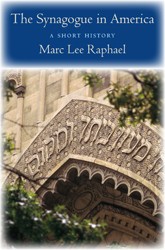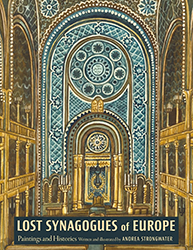Widely considered the most poetic and magical of all Jewish liturgy, the Kabbalat Shabbat service reflects Jewish history from biblical origins to the mystical age centered in Safed in the 16th and 17th centuries. The liturgy demarcates sacred time from the ordinary week, welcoming the Sabbath using poetry, psalms, hidden acrostic, and other prose that challenge the intellect, spark the imagination, and bring the heart closer to God.
The heart of this prayer book is structured like a traditional Jewish text, framed by various commentaries — a conversation among sages across the ages. The editor notes that the translation strives to reproduce not only the content of the original Hebrew, but also its tone, register and style.
The 13 commentators who contribute to the volume represent all denominations of Judaism and offer a wide variety of perspectives, including feminist, legal, biblical, historical and mystical. In addition to the book’s editor, a professor of liturgy at Hebrew Union College-Jewish Institute of Religion in New York, other commentators include Joel Hoffman, Hebrew language scholar; Ellen Frankel, a scholar in Jewish folklore; Reuven Kimelman, a professor of rabbinic literature; and Nehemia Polen, director of the Hasidic Text Institute at Hebrew College in Boston.
For each part of the prayer service, a few lines from eight or nine commentaries appear around the Hebrew and its English translation. The commentaries then jump to the next or subsequent pages. Unless you are used to this type of presentation, flipping between pages is awkward at first. One approach is to pick a favorite commentator and follow his or her threads throughout the book.
The introduction is comprised of several essays that collectively take up more than 40 pages. If you read only one essay, make it the last — “How to Look for Meaning in the Prayers,” which likens the relationship between readers and liturgy to deer in the forest. “Deer do not just inhabit the forest; they are part of the forest; they change the forest’s contours as they live there, just as the forest changes them by offering shelter, food, and water,” the essayist writes.
The book concludes with eight blank pages for notes, encouraging the reader to add his or own tracks to the Kabbalat Shabbat ecosystem.
Other volumes in My People’s Prayer Book series include Shabbat at Home, Concluding Prayers, Morning Blessings, Morning Psalms, the Amidah, and the Sh’ma. Reading these books is like exploring the molecular structure of a diamond to discover why the gem’s surface glitters with such brilliance.




